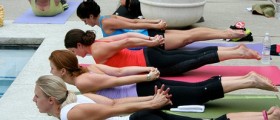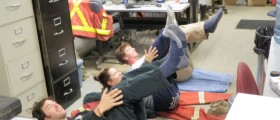
Isometric exercises involve physical exercise of the kind when a person does not change the joint angle and muscle length during contraction. Compared to concentric or eccentric contractions, this type of exercise is performed in a static rather than a dynamic fashion.
This is done by making the joints and muscles work against an immobile force (which is called overcoming isometrics) or are rather held in a static position whilst opposing resistance (also known as yielding isometrics).
These exercises are designed to allow a person to be toned and fit, even if he or she has a physical disability which disallows the person to perform exercises which are regularly practiced at most gyms. This is also why a person without a disability may have trouble grasping the concept as well as the point to such an exercise – since the physically disabled, obviously, face a different range of challenges while exercising.
What do I Need to Get Started?
Because there is a popular misconception that physical workouts simply aren't possible for everyone, the existence of this category also proves the very pretentious assumption wrong. That is to say anyone can benefit from time spent working out at a local gym or withing the comfort of the person's own home.
If a person is embarrassed to get out there and get these moves on out in public, buying one among the wide variety of DVD available out there may be a good idea – at least for starters. In fact, the only requirement to be able to perform isometric exercises is the will to. No special clothes or footwear is needed, no human trainer is necessary and no gym's membership is a must. All that is required to start with is ten minutes out of a day. It is truly surprising how much a persons can benefit from these seemingly trivial.
An Example of an Isometric Exercise...
.... would be: sitting straight up as straight as possible, taking a deep breath and tightening the abdominal muscles as hard as possible. Then the air is to be released after keeping the muscles tight through a slow count to ten. The air is to be released while breathing normally. This exercise is to be repeatedly performed for ten minutes a day. Its goal is to allow the core stomach muscles to burn more calories, trim the waist and make the subject feel more agile than ever before.

















Your thoughts on this
Loading...